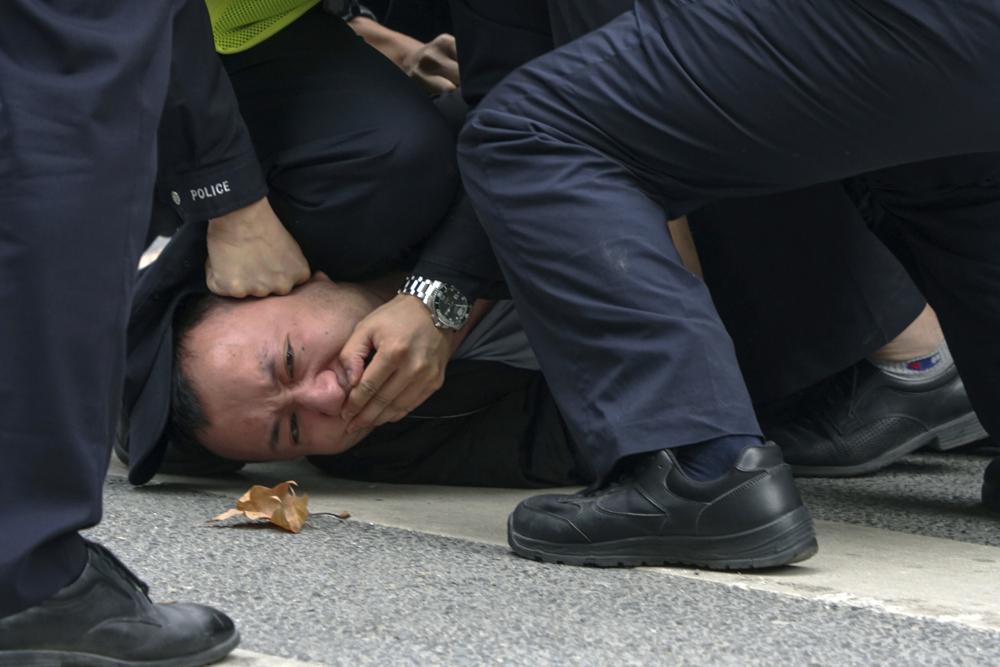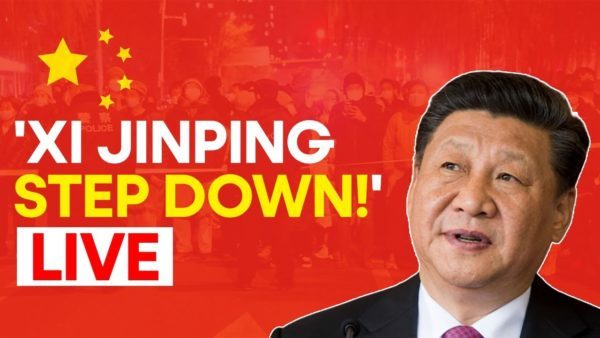Blank sheets of white paper were a symbol of defiance over the weekend as Chinese protesters braved likely prosecution to openly oppose the government’s policy of zero tolerance for COVID and public dissent.
The movement began with a solemn vigil for 10 victims who perished on November 24 in an apartment fire in Urumqi, Xinjiang, the northwestern region where residents had been living in a state of lockdown for over three months. Restrictions on their movements and obstacles preventing a prompt rescue by firefighters were said to have contributed to the victims’ deaths.

Three days of peaceful demonstrations reached a peak in megacities like Shanghai on Sunday, when residents who mourned the avoidable tragedy later clashed with uniformed police sent in to restore order. By that time, the public’s chants had become about more than China’s zero-COVID rules, and included criticism of the excesses of government surveillance and censorship.
Holding blank paper above their heads, protesters hinted at, but didn’t publicly air, the widespread grievances shared by others. It didn’t stop the police from intervening, just as it didn’t prevent the arrests of anti-war activists who attempted the same tactic in Russia and Belarus this year.
The white paper trend became popular among protesters in Hong Kong in 2020, after the city implemented a nebulous and sweeping national security law passed by Beijing days earlier. Over the weekend, Chinese diaspora communities on Twitter and elsewhere called it the “White Paper Revolution,” or the “A4 Revolution,” based on the sheet size.
The list of popular grumbles is long, but they begin with President Xi Jinping‘s signature public health policy, zero COVID, and end with the inability to openly complain about it without risking censorship or arrest, despite its well document impact on the economy, livelihoods and what little remains of civil liberties in the country.
The white paper represents an ironic response to the diminishing space for disagreement under Xi, who has built a vast security apparatus that includes citywide surveillance networks to monitor offline movements, and computer algorithms that automatically filter out sensitive words and viral images from online chatter. All of this has made collective action hard to contemplate, let alone organize.
Those hoping to openly criticize the government have inevitably turned to creative means in the absence of legitimate channels to air their unhappiness. The anonymous sharing of protest posters over Apple‘s iPhone AirDrop feature and graffiti in public restrooms, where there are no cameras, were among recent attempts.
The weekend’s protests carried elements of this frustration. This was especially notable on the campuses of the prestigious Peking University, where an open letter called on the government to roll back COVID controls including mass testing, centralized quarantine, districtwide lockdowns and movement-tracking health apps.
At Tsinghua, Xi’s alma mater, students gathered to call for “democracy, the rule of law and freedom of expression,” a sign that the anti-zero COVID demonstrations were but a vehicle to express wider dissatisfaction with Beijing’s modes of domestic governance.
When Xi was reelected leader of the Chinese Communist Party for a norm-breaking third term in October, hundreds of millions across the country were living under some form of restricted movement because of China’s pandemic controls.
Few among the disgruntled have publicly demanded regime change—a call that directly concerns the CCP’s right to rule—but in Beijing, some in the crowds boldly told Xi to “step down,” while in other regional capitals protesters rallied against “lifelong terms” for their leaders.
Xi’s insistence on heavy-handed COVID measures three years into the pandemic may have roots in his desire for greater social control. However, the Chinese leader’s choices in the coming days and weeks could have implications for the social stability he seeks.
NEWSWEEK

Leave a Reply
You must be logged in to post a comment.